The Art of ZEN From Mind to Form
Warning: Undefined variable $info in /home/wwbwb/sagaswhat.com/public_html/wp-content/themes/sagaswhat/functions.php on line 445
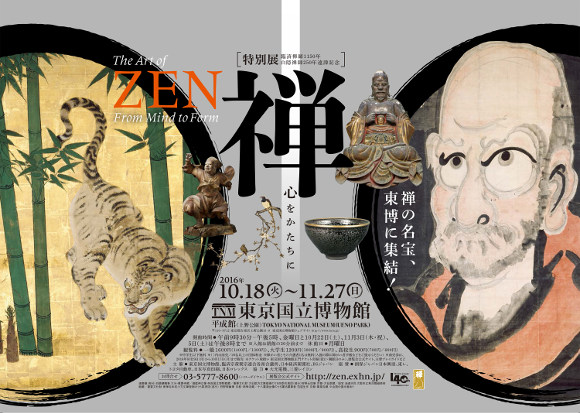
Copyright(C)2000-2016 Joint Council for Rinzai and Obaku Zen. All rights reserved.
Publish the 200 or more treasures of temple, including National Treasures and Important Cultural Properties
Zen Buddhism was transmitted from India to China by the First Zen Patriarch Bodhidharma (Daruma) around 1,500 years ago. It spread throughout Tang-dynasty China under the aegis of the Buddhist priest Linji Yixuan (Rinzai Gigen, died 867) before finally arriving on Japan’s shores during the Kamakura period (1192–1333).
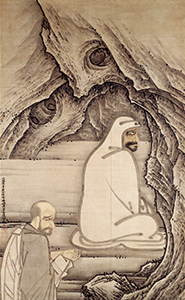
Huike (Eka) Offering His Arm to Bodhidharma (Daruma)
By Sesshu Toyo/ Muromachi period, dated 1496 (Meio 5)/ Sainen-ji Temple, Aichi
【national treasure】
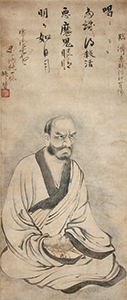
Portrait of Linji Yixuan (Rinzai Gigen)
Attributed to Soga Jasoku; Inscription by Ikkyu Sojun/
Muromachi period, 15th century/ Shinju-an Temple, Kyoto
【important cultural property】
In Japan it received the patronage of the warrior class, the imperial family and the nobility, and it went on to have a major impact on Japanese society and culture. The Obaku school, which follows in the traditions of Rinzai, was transmitted to Japan from China during the Edo period (1603–1868), with Zen subsequently spreading throughout the general populace thanks to the efforts of Hakuin Ekaku (1685–1768) and other high-ranking Zen priests.
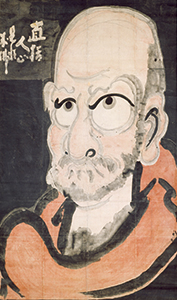
Bodhidharma (Daruma)
By Hakuin Ekaku/ Edo period, 18th century/
Manju-ji Temple, Oita
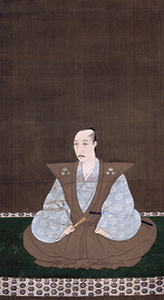
Portrait of Oda Nobunaga
By Kano Eitoku/ Azuchi-Momoyama period, dated 1584 (Tensho 12)/ Daitoku-ji Temple, Kyoto
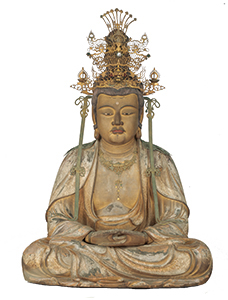
Seated Jeweled Crown Shakyamuni (Hokan Shaka Nyorai) and Attendants
By Inkitsu, Inko, and Inju/ Nanbokucho period,
dated 1352 (Kan’no 3)/ Hoko-ji Temple, Shizuoka
【important cultural property】

Flowers and Birds of the Four Seasons (from a Set of Panel Paintings for the Hojo [abbot’s chamber] at Daisen-in Temple)
By Kano Motonobu/ Muromachi period, dated 1513 (Eisho 10) /Daisen-in Temple, Kyoto
【important cultural property】
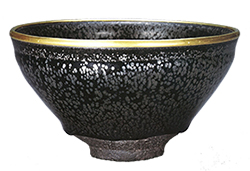
Tea Bowl, Yuteki (Oil Spot) Tenmoku Type Jian ware
Southern Song dynasty, China, 12th–13th century The Museum of Oriental Ceramics, Osaka
【national treasure】
In Tokyo, total 240 treasures, 22 National Treasures and 102 Important Cultural Properties exhibit.
Details
*Please use “More options” on the Map to find the optimal route.
| Event Name | The Art of ZEN From Mind to Form |
|---|---|
| Venue | Tokyo National Museum Heiseikan |
| Dates | October 18, 2016 – November 27, 2016 |
| Note | Closed / Mondays
The exhibition is divided into two major terms: 18 October – 6 November and 8 – 27 November |
| Open Hours | 9:30 – 17:00 Fridays until 20:00 Oct. 22, Nov. 3 and 5 until 20:00 (Last entry 30 minutes before closing) |
| Admission | [At an exhibition] Adult: 1,600 yen University student: 1,200 yen High school student: 900 yen [Advance] Free entry: – For Middle-high school students or under. |
| Address | Tokyo National Museum 13-9 Uenokoen, Taito-ku, Tokyo |
| Contact | +81 3-5777-8600 (NTT Hello Dial) |